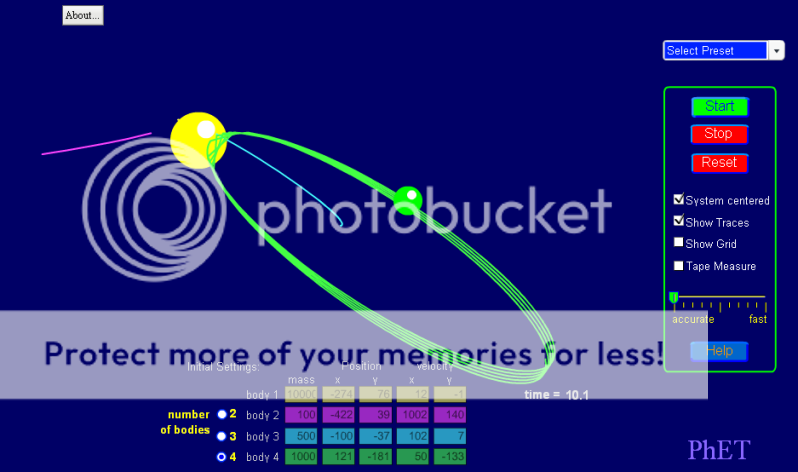This orbit makes no sense to me
Is that actually possible in real life? An orbit in which the smaller does not orbit around the larger body, but just "orbits" towards it in a circle instead? I have never heard of any "orbit" like this.
It almost seems as though they are colliding when they are closest, but the smaller object doesn't disappear (is absorbed) like in the impact you can see with the blue line. Perhaps in real life, the objects would come close enough to steal material from each other, before the smaller one is flung off into its orbit again (assuming such a thing is possible, of course).
EDIT:
Wait! I was wrong! The blue and purple planets didn't collide with the "star", they were swept out in an ultra long orbit, before coming back and colliding with the green object (star, planet, whatever) and being destroyed at about time 20. This has disturbed the weird orbit of the green object, causing it to collide with the yellow main body.
Actually, wait, I was wrong again... The blue and purple objects didn't collide with the green object. They've just reappeared and
seem to have collided with the main body, before disappearing.
It look like when things "collide" they just get an impact flash and disappear from the screen, but they don't stop existing, because they keep orbiting. I don't understand this program.






